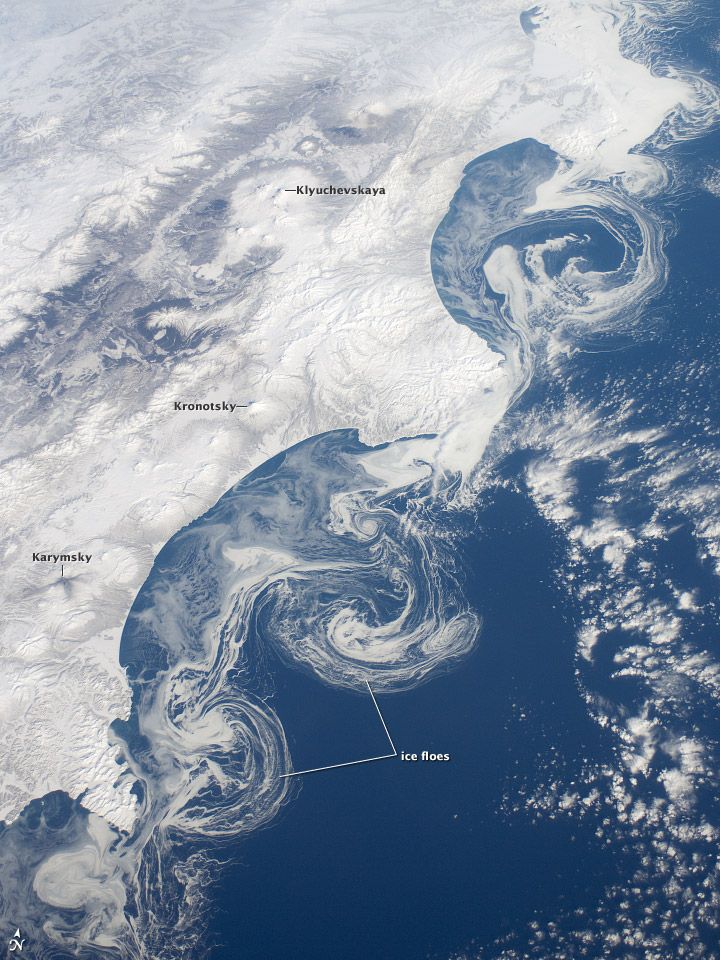
Earth As Art: Swirling Ice Floes

Astronauts aboard the International Space Station have a unique perspective on the globe that often offers them a glimpse of processes that are hard to see from the ground. One such process is the swirling of ice floes by the currents off Russia's Kamchatka Peninsula.
During the winter, the peninsula, and its numerous volcanoes, are blanketed in snows, while sea ice forms on the Pacific coastline. As these ice floes grind against each other, they produce smaller floes that can be moved by wind and currents, according to a NASA statement.
The irregular southeastern coastline of Kamchatka provokes large, circular eddy currents to spin off from the main southwestward-flowing Kamchatka current. Ice floes in the astronaut image highlight three such eddies.
While floes appear thin and delicate from an astronaut's vantage point, they are actually very dangerous for ships to navigate, as even small floes can be several meters across.
The Kamchatka Peninsula is home to many stratovolcanoes , some of which are currently active and can be seen in the image. Kliuchevskoi Volcano, the highest in Kamchatka with an elevation of about 15,863 feet (4,835 meters) and one of the most active, had its most recent confirmed eruption in June 2011. Meanwhile, Karymsky Volcano (to the south) likely produced ash plumes just days before this image was taken; the snow cover on the south and east sides of the summit is darkened by a cover of fresh ash or melted away altogether (image bottom center). By contrast, Kronotsky Volcano last erupted in 1923.
Sign up for the Live Science daily newsletter now
Get the world’s most fascinating discoveries delivered straight to your inbox.











